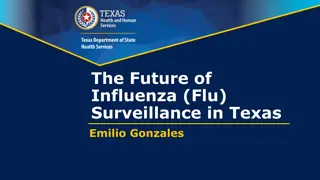Influenza Vaccination Campaign 2016: Aim, Objectives, and Implementation
The Influenza Vaccination Campaign in 2016 aimed to mitigate the effects of influenza by reducing morbidity and mortality, limiting virus transmission, and easing the burden on the healthcare system. The campaign was managed by a National Coordination Steering Committee, with focus on priority groups for vaccination, vaccine formulations, and vaccination characteristics. Coordination, target population selection, and vaccination logistics were detailed in the campaign to ensure effective implementation and community mobilization.
Download Presentation

Please find below an Image/Link to download the presentation.
The content on the website is provided AS IS for your information and personal use only. It may not be sold, licensed, or shared on other websites without obtaining consent from the author.If you encounter any issues during the download, it is possible that the publisher has removed the file from their server.
You are allowed to download the files provided on this website for personal or commercial use, subject to the condition that they are used lawfully. All files are the property of their respective owners.
The content on the website is provided AS IS for your information and personal use only. It may not be sold, licensed, or shared on other websites without obtaining consent from the author.
E N D
Presentation Transcript
Influenza Vaccination 2016 Cluster: Communicable Disease, NDoH 1
Outline Aim and Objectives Coordination Who,When and Where Vaccination characteristics Vaccine administration & Safety 2
Aim and Objectives Aim: Mitigate the effect of influenza in 2016 Objectives: Reduce influenza-related morbidity and mortality i.e., protect the vulnerable Reduce transmission of the influenza virus within communities and limit burden on the healthcare system 3
Coordination Campaign is managed by multisectoral National Coordination Steering Committee Subcommittees formed logistics, technical and social mobilisation Funding for influenza vaccines is from provincial budgets 4
When and where Vaccinations will be conducted in public health facilities Communication for community mobilisation and information will be conducted by provincial and district levels . 5
Target population Not everyone is at risk for severe disease, and due to limited availability of the vaccine, not everyone needs to be vaccinated against influenza. In consultation with NAGI and provinces, priority groups include; Adults or children at high risk for influenza-related complications because of underlying medical conditions including: chronic pulmonary disease (including asthma), cardiovascular disease (except hypertension), renal, hepatic, neurologic, haematologic or metabolic disorders (including diabetes mellitus), morbid obesity (BMI 40), and immunosuppression (including HIV-infected persons) Pregnant women irrespective of stage of pregnancy Children aged 6 months to <5 years (59 months) Residents of old-age (nursing) homes and other chronic care or rehabilitation facilities Children aged 6 months to 18 years on long-term aspirin therapy All persons aged 65 years Health care workers who fall into any of the above target groups should also be vaccinated 6
Vaccination and vaccine characteristics (i) Recommended Vaccine Formulations for southern hemisphere, 2016 Trivalent vaccine an A/California/7/2009 (H1N1)pdm09-like strain an A/Hong Kong/ 4801/2014(H3N2)-like strain; a B/Brisbane/60/2008-like strain Vaccines should contain 15 g of each haemagglutinin antigen in each 0.5ml dose Protection derived from influenza vaccination lasts about 6 months
Vaccination and vaccine characteristics (ii) Inactivated influenza vaccine can be given concurrently as other injectable, non-influenza vaccines but administered at different injection sites Effective 14 days after vaccination (those infected shortly before (1-3 days) or shortly after immunisation can still get disease. Protection expected to last at least 6-8 months Cannot cause disease People who have received influenza vaccine can later have an illness caused by other common viruses which may not be influenza but may be mistaken for flu 8
Vaccine safety Trivalent vaccine is an inactivated vaccine and is safe with a well established safety record. Safe in pregnancy and in children > 6 months of age General immunisation safety practice as with EPI vaccines 9
Contraindications Trivalent inactivated vaccine should not be administered to; People with history of anaphylaxis (hypersensitive reactions) following receipt of any vaccine component including eggs, neomycin or polymyxin antibiotics People with history of severe reaction to previous influenza vaccination People who developed Guillain-Barre syndrome (GBS) within 6 weeks of getting an influenza vaccine Children < 6 months (Product package inserts provide information on contraindication) 10
Administering Vaccine The influenza vaccine must be administered intramuscularly (IM) as follows: Adults and children above 6 years: Injection into the upper arm (Deltoid) Younger children 1year to <6 years, inject the LEFT upper arm For infants 6 11 months, inject the LEFT anterio- lateral thigh If any other vaccine is administered at the same time as the influenza vaccine, the opposite limb must be used. 11
Dosage Age Group Dose Number of doses Adult dose (0,5ml) IMI Single dose Adults and children from 9 years of age Adult dose (0,5ml) IMI 1 or 2 doses* Children 3 years to 8 years Children 6 - 35 months 1 or 2 doses* 0.25ml (half an adult dose) IMI * if receiving the vaccine for the first time, 2 doses should be administered at least 4 weeks apart 12
THANK YOU 13
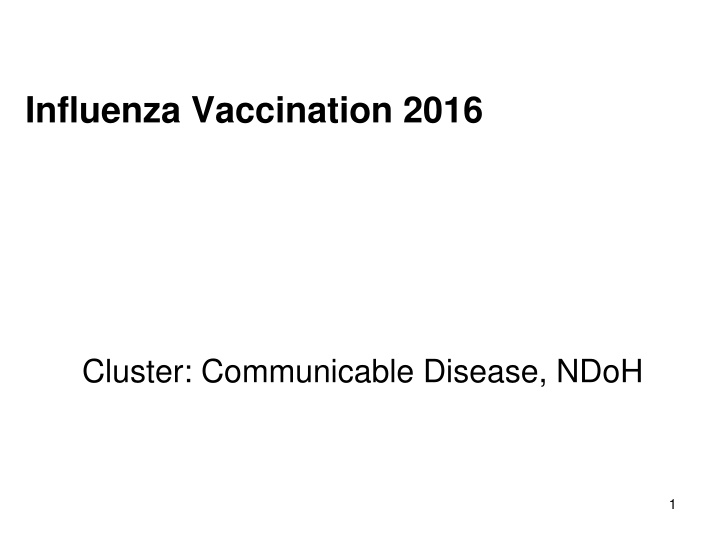


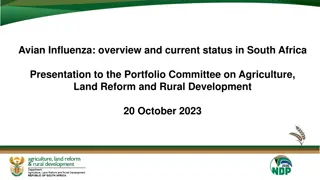
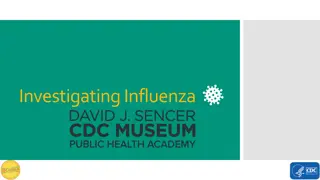



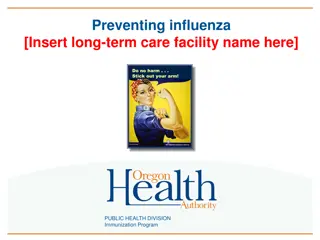

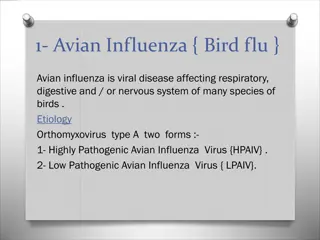

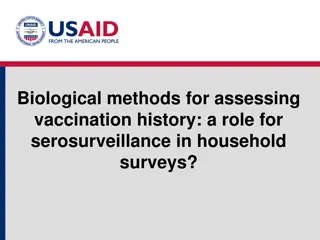
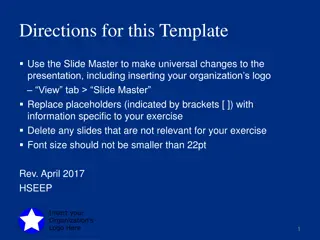

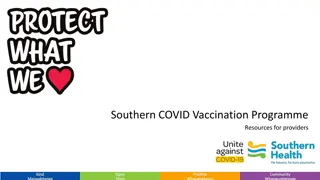

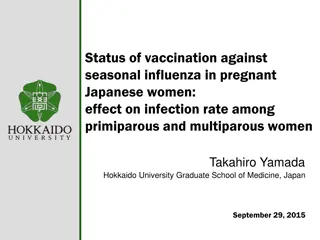
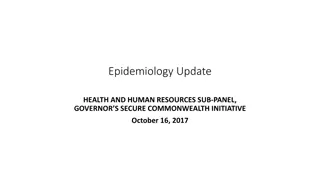
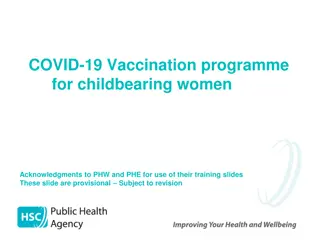
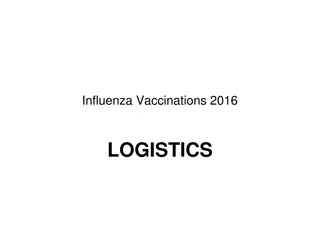
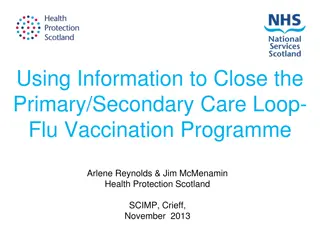
![Preventing Influenza at [Name of Critical Access Hospital]](/thumb/233818/preventing-influenza-at-name-of-critical-access-hospital.jpg)
